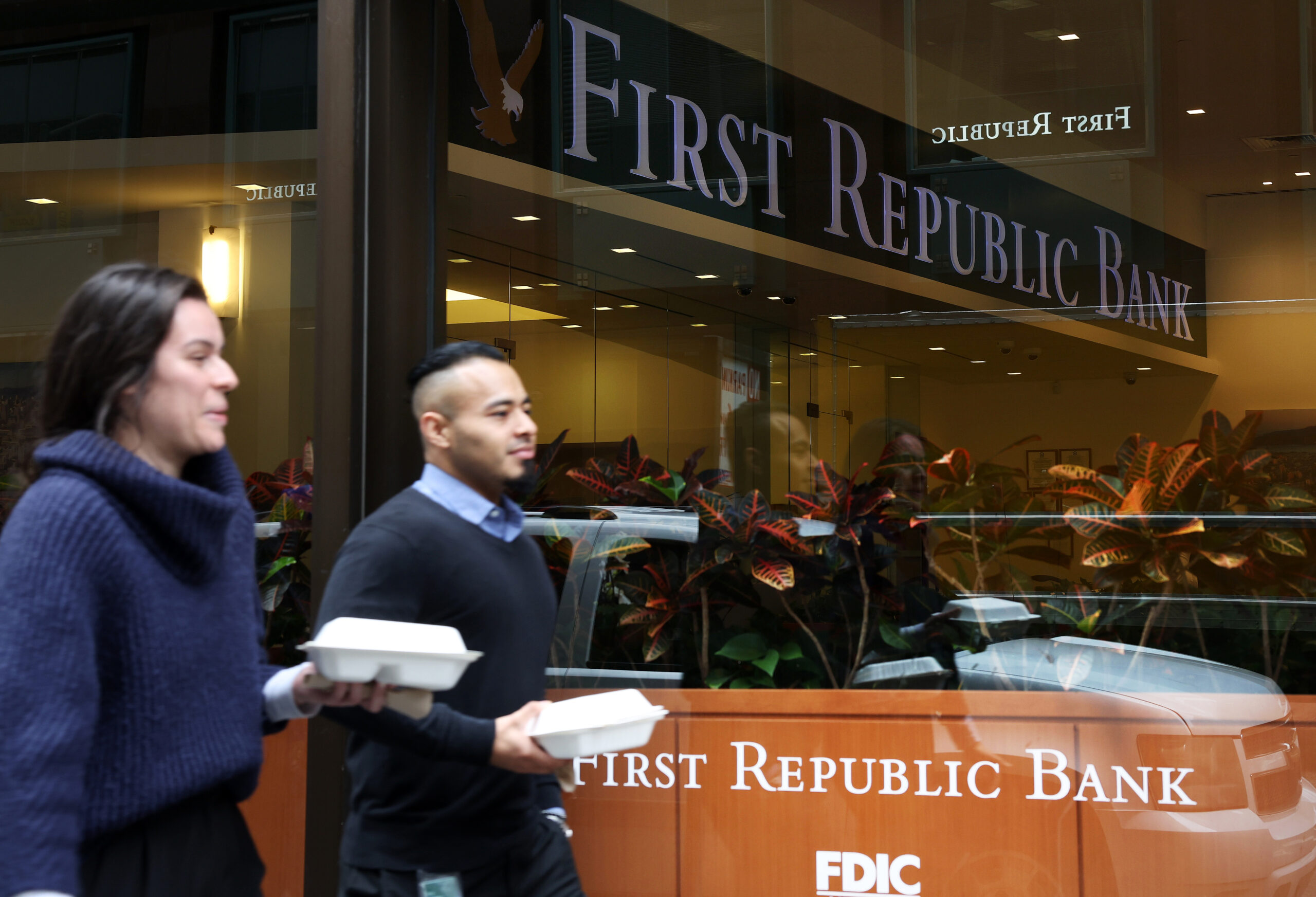Now that a portion of Silicon Valley Bank’s assets have been picked up at a significant discount, the question turns to whether that intervention is enough to prop up San Francisco’s First Republic Bank and the rest of a struggling banking sector.
First Republic’s stock price closed up 12% Monday after SVB’s sale, as part of a broader rally by regional banks. But banking experts say that the faltering institution’s challenges are far from over.
Founded by Jim Herbert in 1985, First Republic specializes in high-touch service and wealth management, focused on a high-net-worth clientele. But those customers were perhaps most prone to move their money to “too big to fail banks” amid concerns about regional banks and whether uninsured deposits would be protected.
Precipitous Fall
Major deposit outflows on the order of $70 billion at First Republic were followed by a number of credit rating downgrades, which added to signs of distress for the Bay Area’s third-largest bank. The bank’s share price has lost nearly 90% of its value over the last month.
Federal officials—who previously announced a $25 billion Federal Reserve program to provide short-term loans for banks that put up securities as collateral—are weighing additional support for vulnerable banks.
Bloomberg reported that the Fed is considering expanding its emergency lending program to provide additional aid, but has concluded that the situation at First Republic has begun to stabilize.
Crucially, deposit outflows have slowed. That buys valuable time: The bank has enough liquidity to meet its current needs while leaders look for an exit strategy in the form of additional fundraising or a potential acquisition.
Ludwig Chincarini, a professor of finance at the University of San Francisco, said the immediate concern of a bankruptcy or federal takeover à la SVB has abated, but the bank still faces significant challenges. For one, he said the stock isn’t particularly attractive right now from an investment perspective.
“The longer-term question they’re asking is: What are they going to do with the lost deposits? Either they’re going to have to call clients back and say, ‘We’re doing OK now,’ or they’re going to have to lay off a bunch of people,” Chincarini said. “I think that latter option is more likely.”
On social media, First Republic has been boosting stories from clients who have chosen to stick with the bank as a counter-narrative to those pulling their money out.
Calming Fears
In a bid to instill confidence in First Republic and the broader sector, a coalition of major financial institutions—including J.P. Morgan, Bank of America and Citigroup—made $30 billion worth of deposits earlier this month.
Jay Ritter, a professor of finance at the University of Florida, said deposit outflows have slowed, in large part because those most willing to pull their funds have already done so.
“Secondly, the federal reserve and the FDIC have largely been saying that for any major bank, you don’t have to worry about getting your money back, whether you are an insured depositor or not,” Ritter said. “They’re stating they don’t want the collateral damage for allowing a major bank to go belly up and largely removing the threat which causes bank runs in the first place.”
These deposit outflows proved fatal to banks like SVB and Signature Bank, which were forced to sell securities at major losses. That, in turn, led to a death spiral of falling share prices and fleeing depositors.
“Part of the rationale of bank accounting is if you have sticky deposits, it’s likely that the spread of what you’re paying on deposits matches the interest you’re making on your loans or bonds,” Ritter said. “As long as deposits are sticky, that makes a lot of sense.”
Racing Against the Clock
Chincarini said he suspects that First Republic’s leadership is trying to find someone to purchase the company prior to its next earnings announcement, where the damage done to the bank’s financials will be publicly disclosed. First Republic is expected to report its latest quarterly earnings in mid-April.
“The earnings announcement will reveal about what they had to sell and what damage was done,” Chincarini said. “I would imagine many folks don’t want to be around to see what comes after that.”
As First Republic and its enlisted advisers look for a path forward, Ritter said one sticking point may be what academics call the “debt-overhang problem.” Essentially, that’s when the debt load from existing assets makes it difficult for the bank to issue equity for more capital without compromising existing stockholders.
He said that federal officials can help to ease this blockage via loss-sharing arrangements to help spread the risk from bad assets.
“I suspect that’s a bit of a problem with First Republic,” Ritter said. “Although it’s not in as bad of a shape as SVB, it’s very possible that they will only get a private equity firm or some other bank to come in for some kind of rescue if the FDIC agrees to subsidize some potential losses.”
